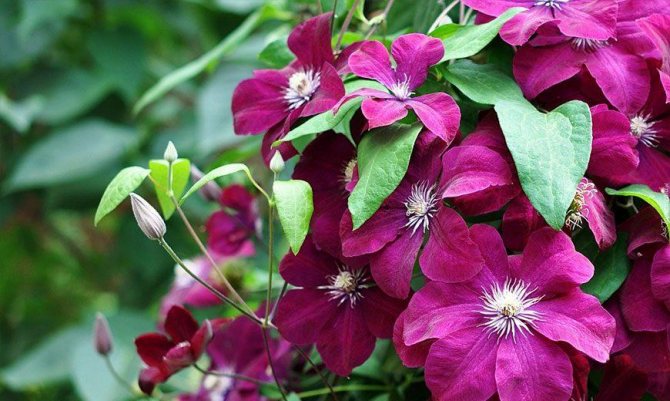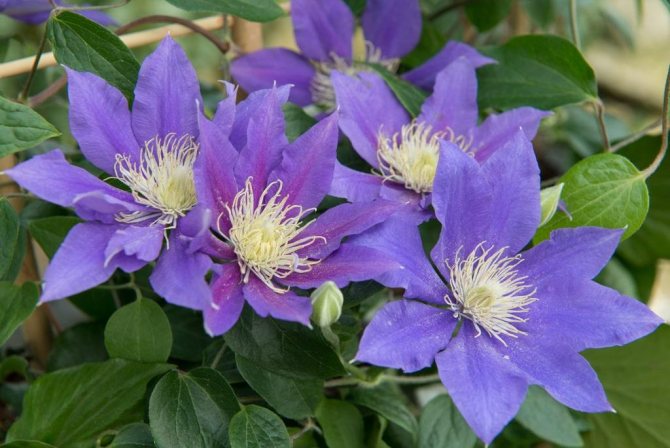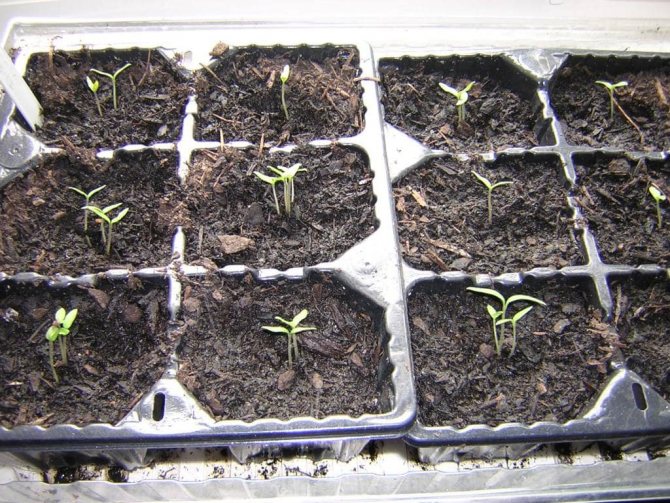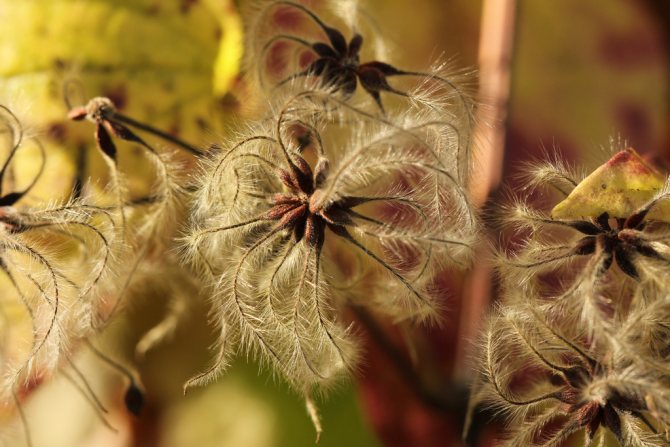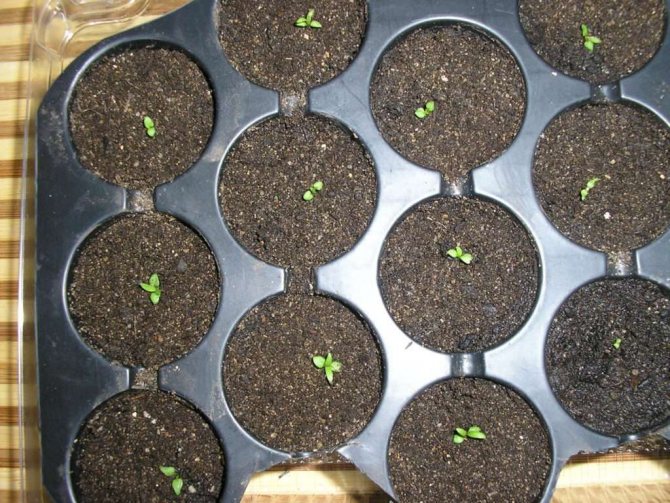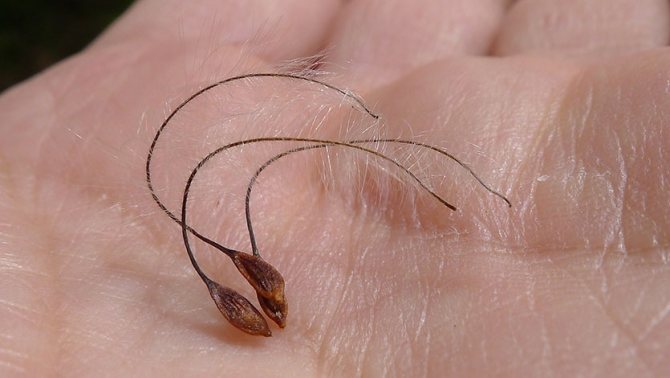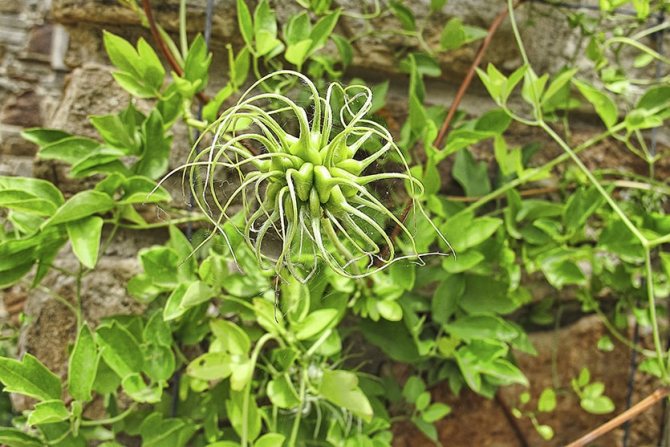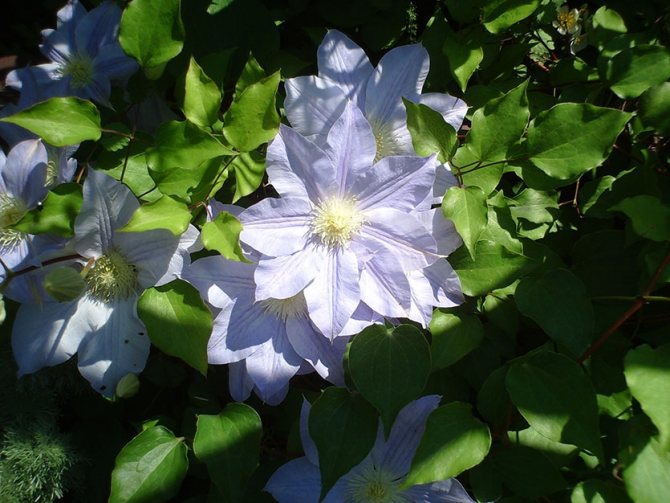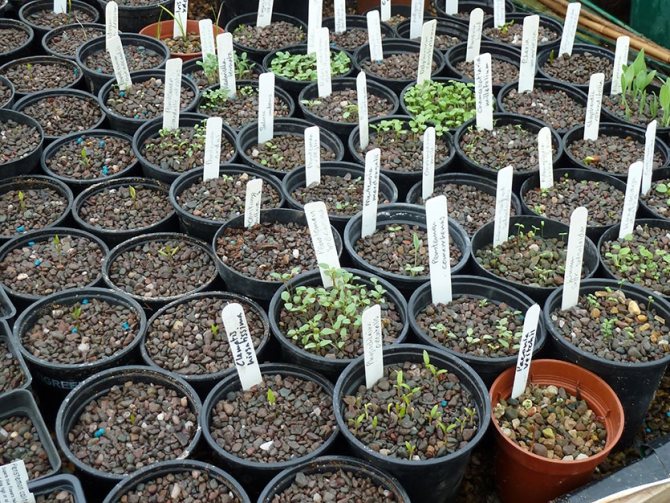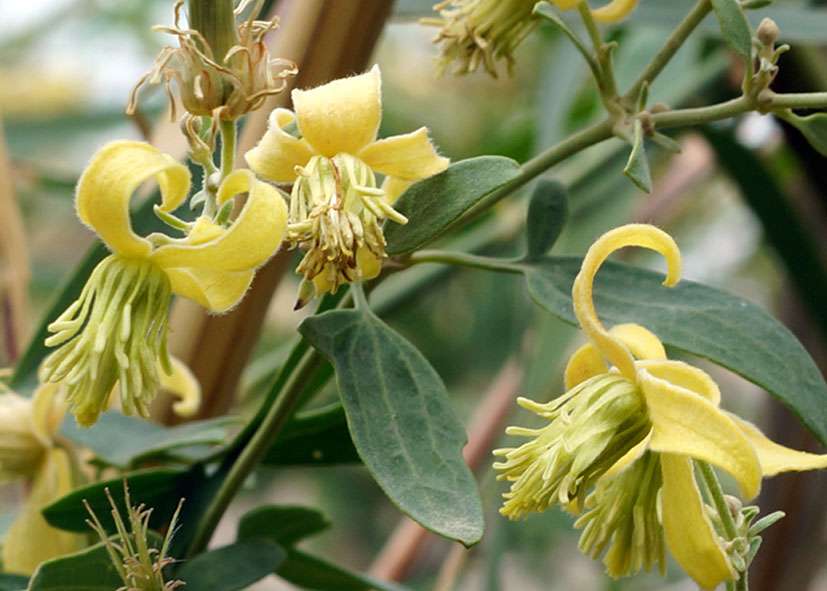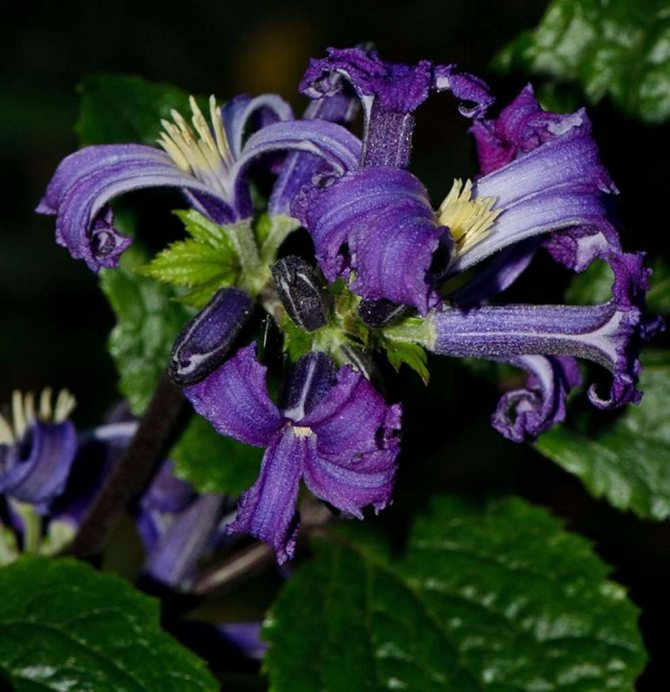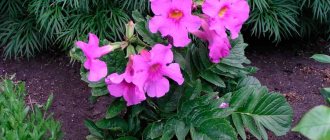
- 28 August, 2018
- Planting plants
- Ekaterina Komisarova
Perhaps the most popular flowers around the world are clematis, which belong to the buttercup family. Today, there are about 300 species of them, most of which grow in the wild. However, some of them are grown at home. The plant has an attractive appearance, so it will be a wonderful decoration for any garden. Breeders have bred many varieties of this flower, which have excellent characteristics and perfectly adapt to any climatic conditions. Let's try to understand how clematis is cultivated from seeds at home so that you can create an attractive landscape on your backyard.
general information
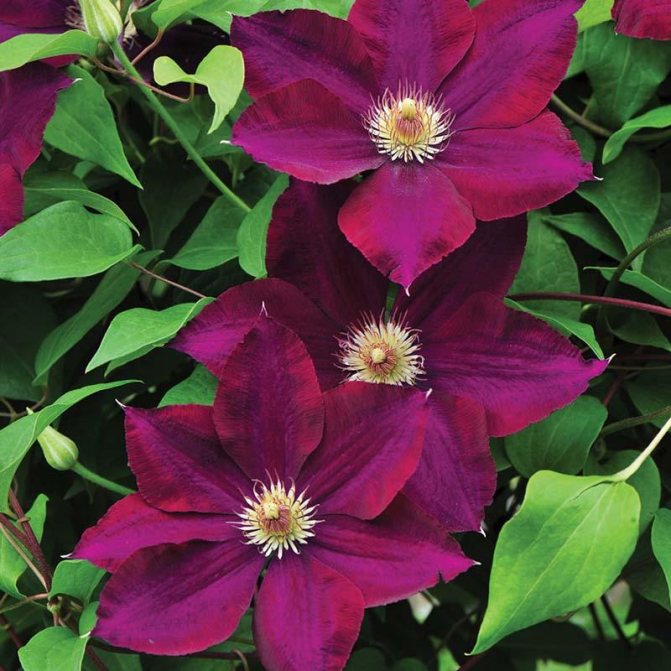

Whether wild or hybrid varieties, the plant has a woody stem. But there are also crops that are herbaceous varieties. An adult flower in its appearance resembles a lily, which is dotted with multi-colored buds of impressive size. It is worth noting that clematis seeds germinate well and give a good harvest. Due to its variegated color, the flower is widely used in landscape design. With the help of it, they create unique compositions that simply have no equal. The plant is equally well suited for decorating flower beds, fences and gazebos. However, it is very important to properly grow this amazing culture. Most gardeners do this with shoots, but there is also a small group that prefers the seed method. It is more complex, but no less effective. What should be taken into account in this case will be discussed below.
What is clematis photo
The genus of perennial flowering vines Clematis or "Lomonos", belonging to the Buttercup family, includes more than 200 species of diverse forms that grow throughout the subtropical and temperate climates. Plants are also varied in appearance, which are clearly visible in the photo.
Typical representatives have climbing shoots, clinging to the support with cuttings of leaves from 3 to 10 m, sometimes woody from below, erect up to 150 cm, others are flexible, herbaceous, creeping. The root system of some species is fibrous with thin, light brown roots, while others are pivotal with thick, dark brown strong roots that penetrate up to 1 meter deep.
A feature of the flower is the colorful perianths, which play the role of petals, with numerous shades of white, red, blue, purple, yellow. According to the size of the flower, clematis is divided into small-flowered (2 - 7 cm) and large-flowered (8 - 25 cm). Flowers are single or collected in inflorescences (panicle, semi-umbilical, scutellum). Some species have a pleasant aroma.


Each species or variety also has different leaves. In some, they are unpaired, complex, consisting of 3 to 7 leaves, in others, they are simple, opposite. The surface of the leaf also varies: naked or pubescent, sometimes leathery. A feature of many species is the ability of the leaves to wrap around the support with cuttings, holding on to the weight.
Clematis bloom profusely, for a long time, continuously from May to September, or twice a season. The first flowering occurs on last year's stems, the second - on newly emerged shoots.
Shoots of herbaceous species die off in autumn, and in spring they grow back from basal buds. The woody forms retain the stems. An attentive attitude to the plant preserves its decorative effect for up to 20 years.
Features of the seed propagation method
Let's take a closer look at this. If you want clematis in your garden (how to grow them from seeds, will be discussed later), then you need to take into account the key features of the plant. It is necessary to take some measures so that the sprouts have time to get stronger, form a healthy root system and normally take root in a new place. In this case, the flowers will delight you with their incredible beauty in the first year after planting. But you must understand that this process is quite laborious and time-consuming, but clematis will grow strong and healthy and will in no way be inferior to those grown by means of seedlings.
You can verify the beauty of the flower by looking at the photo. It is recommended to sow clematis seeds in the middle of winter, so that before spring they have time to germinate and are ready for transplantation into open ground. In addition, there are several ways of sowing seeds right away in the garden. This method will be discussed in detail in the next section.
How to plant clematis in the garden
The time of planting seedlings will depend on the climatic conditions of the region. Gardeners of southern latitudes can plant clematis even in autumn (September - October). The temperate climate presupposes a spring planting, when recurrent frosts pass, so that the plant has time to take root. This rule does not apply to purchased container seedlings with a closed root system - they can be planted at any convenient time.
Step 1. Choosing a location. Clematis grow well on drained loamy fertilized soils with neutral acidity, which is maintained annually by spilling a solution of chalk or dolomite flour. The place should be sunny, sheltered from the wind.
Step 2. Preparing the pit. The size of the hole for the full growth of an adult plant requires a minimum of 50 x 50 x 50 cm, even more for heavy soil. The bottom of the pit is laid with a sufficient amount of drainage. You can use expanded clay, clay shards, pebbles, crushed stone.
Step 3. Preparing the soil. The most important thing is the composition of the soil:
- humus or compost, or rotted manure (2 buckets);
- granular superphosphate (200 g);
- ash (3 glasses);
- dolomite flour (250 g).
The components mixed with each other are spilled with hot water with potassium permanganate, the planting pit is filled with prepared soil to the middle.
Step 4. Planting a seedling. In the center, a mound is poured from the soil, on which a seedling is planted, straightening the roots. Young shoots of seedlings, stretched out above the second bud, are pinched, damaged roots are treated with crushed coal.
The planting feature is the deepening of the root collar. The soil layer above the neck should be at least 5 - 10 cm. The pit is not completely covered with earth, adding it as the stem grows, thus building up additional adventitious roots on it. The roots are protected from overheating by mulch, or by planting low-growing annuals.
Step 5. Further care consists of abundant watering, regular complex fertilizing (after 2 weeks), removing weeds, loosening the soil. Such seedlings from seeds bloom after 1 - 3 years, depending on the species.
Important! A feature of the cultivation of clematis is the obligatory shading of the root zone from direct sunlight.
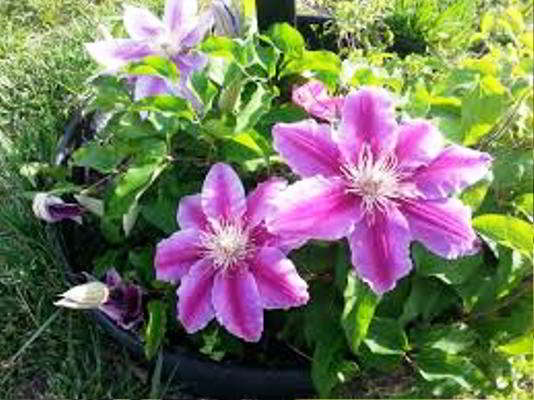

Cultivation of various varieties
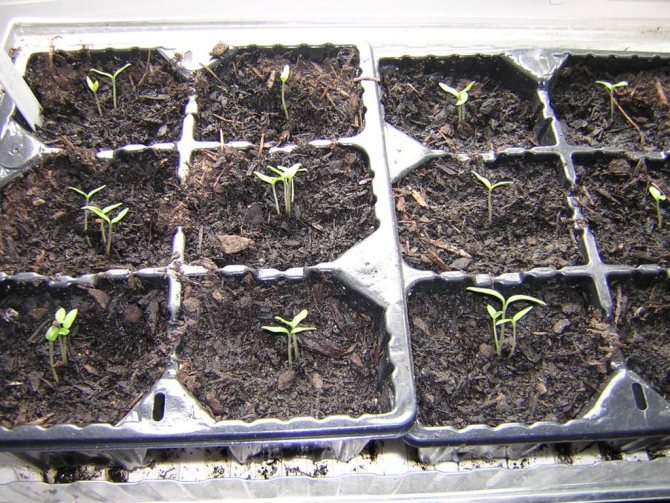

So what do you need to know about this? To avoid many problems when breeding flowers, it is recommended to buy small-flowered varieties of clematis seeds, which in their characteristics are as close as possible to plants that live in the wild.They have good resistance to pests and diseases, and also perfectly adapt to any soil and climatic conditions. It is recommended to abandon the breeding of complex hybrids, since they are very capricious and whimsical to care for, so a large number of problems will arise with them. In addition, their seeds are very difficult to germinate. It is also worth considering the fact that some varieties are simply not suitable for growing indoors, therefore, when choosing specific types of clematis, first of all, consider your goals and wishes.
Clematis pungent small-flowered white
This species is found in the Mediterranean, in Asia, where it has been known for more than three hundred years, in northern Africa. In our country, clematis burning grows from Rostov to Tver. Under natural conditions, this tall vine grows up to five meters. Cord-like powerful roots secrete substances that irritate the mucous membranes of the eyes and nose. This is where the name of the plant comes from.
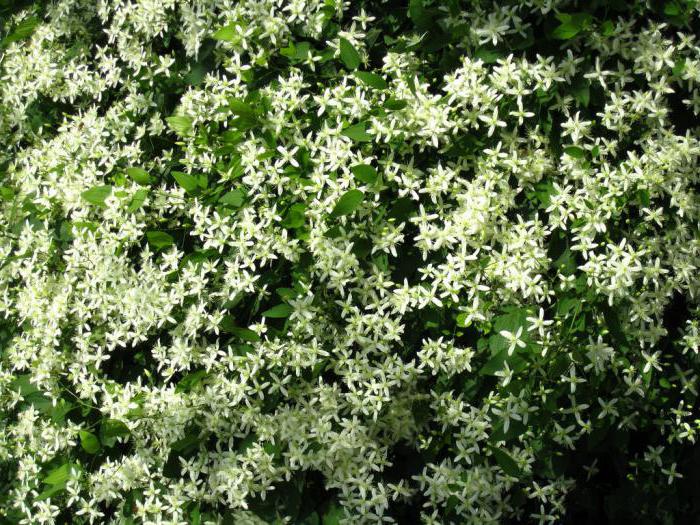

Clematis pungent is a deciduous perennial liana up to three meters long. Distributed in Western Europe and the Caucasus. It differs from other varieties in frost resistance, splendor of flowering and decorativeness. The open, cruciform flowers emit a delicate, refined aroma They gather in multi-flowered inflorescences. Blooms profusely in July. Plants should be pruned in spring. Prefers sunny locations or light partial shade. During flowering and fruiting, it is very graceful and decorative. In Europe, it is widely used in planting.
It is advisable to plant Clematis pungent next to the supports, along which it easily climbs, gradually increasing the dense green mass with a huge number of flower buds. It begins to bloom in early summer and pleases with its appearance until the end of August.
Tangut clematis
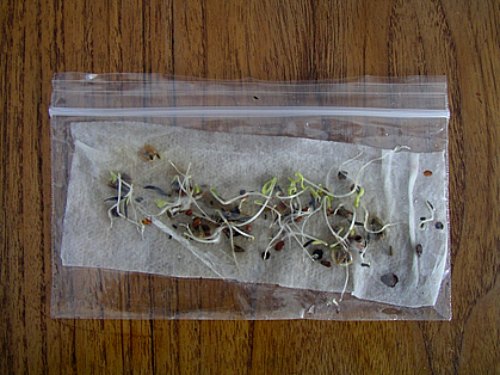

Before growing from clematis seeds, you must first treat the material with a growth stimulator. This type of clematis is distinguished by brighter flowers and a longer growing season, thanks to which it has received a lot of love from a huge number of gardeners. Can act as both indoor and outdoor plants. The variety is also unpretentious and adapted to harsh climatic conditions, but it is very difficult to cultivate it by seed.
Tangut clematis eventually grows into a climbing vine, so no matter where you grow it, it is very important to build some kind of support for the plant. Otherwise, the stem may simply break.
Further care
Care for young clematis differs from the agricultural technology of the formed clematis. They require regular watering and careful weeding. In the autumn and spring months, ash with rotted manure is poured onto the roots as a top dressing.
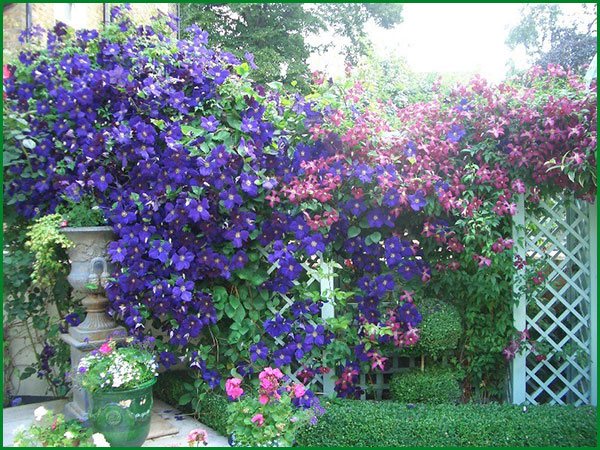

Clematis in the garden
Roots need overheating protection. Therefore, they are shaded, and the soil is mulched with moss, sawdust, foliage. In regions with harsh winters, clematis are hidden under cover.
Caring for mature clematis does not require close attention. Watering is carried out only in cases of long periods without precipitation. Annual pruning has a rejuvenating effect on the plant.
Helios
This variety of clematis deserves special attention. Flower seeds are very easy to germinate, and almost 90% of the planting material allows you to get high-quality seedlings with a well-developed root system. When breeding clematis Helios at home, it is necessary to take into account the fact that before receiving seedlings, the plant must be in room conditions or in a greenhouse, since an immature flower does not tolerate low temperatures well, which cannot be said about an adult.
With the seed method of breeding, the characteristics of clematis gradually deteriorate.Each new generation is significantly inferior in beauty to the mother bush, so if you want to preserve the decorative effect of the plants, you will need to perform a very complex grafting. That is why many gardeners recommend purchasing ready-made seedlings immediately.
Growing from cuttings
Plants older than three years can be propagated with "green" or already lignified cuttings... It is advisable to carry out cuttings in late spring or in the first decade of summer, when clematis is in the active phase of growth and bud formation. Shoot pruning is done completely. To avoid the weakening of the parent plant, more than a third of all shoots must not be cut off.
Cuttings should be cut from bud-free shoots. Each cutting should have at least one node, the lower cut is made at an angle of 45 degrees, the upper one - at an angle of 90 degrees.
Rooting is carried out in greenhouses or containers with a peat-sandy substrate. Processing cuttings with special growth regulators increases the amount of conditioned seedlings. Successful rooting requires a relative humidity of 90 percent. Cuttings can be equipped with "domes" based on translucent materials, not forgetting to ventilate the greenhouse and sprinkle plants from a spray bottle with water at room temperature.
Procurement of planting material
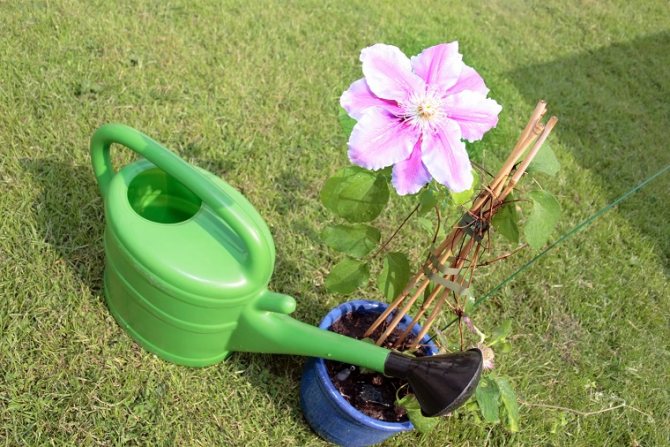

Growing clematis from seeds at home will be more productive if you are serious about collecting them. It is very important to choose the right time here, since it is different for all varieties. In addition, seedlings must be properly prepared and stored so that they do not lose their properties.
The planting material may vary in size, therefore, first of all, it should be sorted. This is necessary in order for all the seeds to sprout at the same time. It is best to select large specimens as they perform well. Small ones sprout about 50 percent of the time, so you might be wasting your time.
You can collect clematis seeds at any time of the year, but the cultivation method depends on it. Autumn planting material is suitable for planting exclusively in greenhouse conditions, and spring planting material can be immediately planted in the garden. It must first be stratified. Such a procedure allows several times to increase the percentage of seedlings, improve survival in harsh climatic conditions and increase resistance to various diseases.
It is more preferable to sow seeds in the spring, since in this case they do not need to be pre-prepared, but it is enough to provide only the correct storage conditions. To do this, it is better to use a glass container that is placed in a dark room with an air temperature of about 5 degrees Celsius. When sowing in autumn, gardeners are advised to put the planting material in the refrigerator for 2 weeks in order to harden it a little and prepare the plant for the upcoming wintering.
Reproduction of clematis by seeds
Clematis are perennials, propagated by cuttings, dividing the bush, layering, seeds. To grow flowers from seeds, you first need to choose a planting material.
Large-flowered clematis produce very few seeds, while small-flowered clematis produce a lot. In appearance, the seeds resemble small nuts with a fluffy tail on a thin stem. In the place of the flower, a fluffy head of such nuts is formed in the fall. The seed is inside every nut.
Clematis have different periods of seed ripening, only brown seeds need to be collected, in which the fluffy head crumbles upon contact. Fresh seeds are needed for sowing. When buying in a store, you need to pay attention to the expiration date. When stored properly at temperatures up to 22 degrees, paper bag seeds can be used for 4 years.
Seeds are divided into three groups by size:
- Small seeds (up to 3 mm). The timing of their germination is from 1 week to 4 months.
- Medium seeds (up to 6 mm). Germinate from one and a half to 12 months.
- Large seeds (up to 12 cm). The germination period is very long (up to a year).
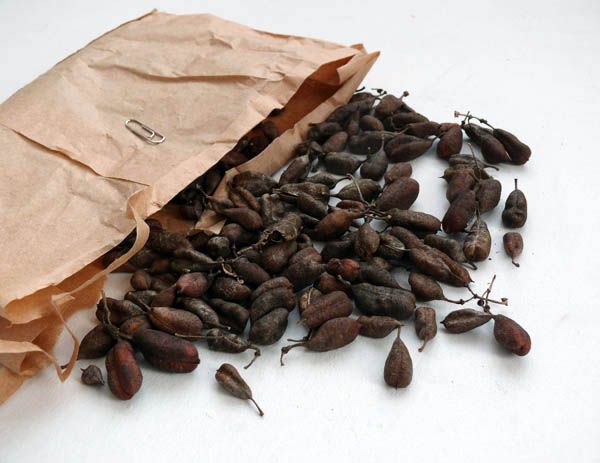

Soil and watering
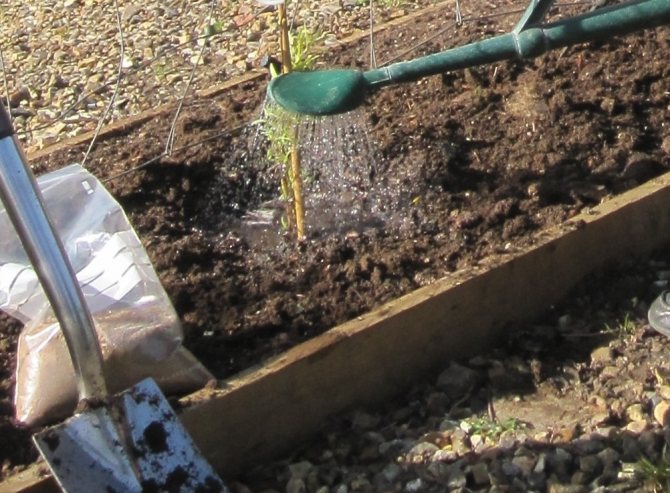

You can see what clematis seeds look like in any gardening store. In different varieties, they differ in size and color, and as for cultivation, the principle is the same. For sowing, special boxes are chosen, which are kept indoors until spring. In early spring, when the snow melts, they begin to take them outside for a short time so that the plants harden and get used to the climatic features of your region.
In order for the seedlings to be strong and healthy, a special substrate will be required. You can buy it or make it yourself.
To do this, you will need:
- organic fertilizers;
- sand;
- black soil;
- wood ash.
After sowing, it is very important to keep the soil constantly moist, while preventing moisture stagnation. If you have never had clematis before, growing from seed will be easier, especially if you choose unpretentious flower varieties. One of these is the Manchurian clematis. This variety has an amazing germination rate, so you can get great results.
What seeds look like, preparation for sowing
Clematis seeds are formed in ovary boxes. When ripe, they open up and expose white fluffy balls (like a dandelion), consisting of fly-villi and a seed at the base of each.
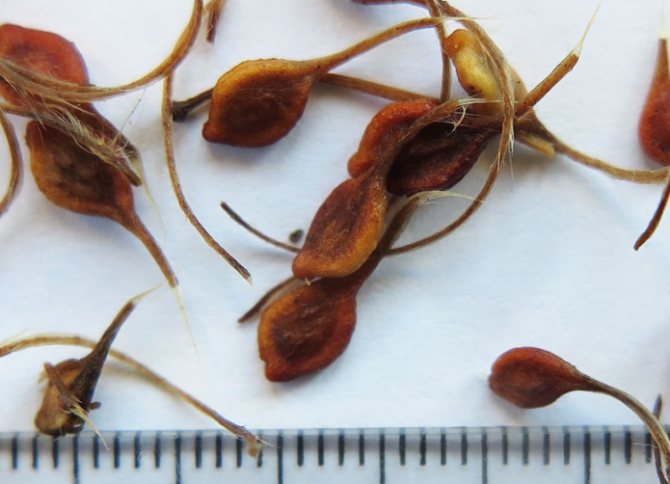

Oval clematis seeds with fly tails
The germination rate for all species is in an impressive time range. If the seeds are preliminarily prepared, then the period will approach the minimum possible. For example, in species with small seeds, seedlings will appear in 20 days, rather than 3 months.
Dense seed coats can be softened by bubbling:
- Dissolve 1 tsp in 200 ml of water. baking soda.
- Pour the solution into a half liter jar, place the seeds in it and connect the aquarium compressor.
- Bubble for 5-6 hours.
- Change the water to clean water and bubble the seeds again for 3-5 days, changing the water 3 times a day.
Stimulants will also accelerate germination. Immerse the seeds for half an hour in a solution of aloe juice with water (1: 1) or Epin, Zircon, HB-101, succinic acid (according to the instructions).
Plant transplant
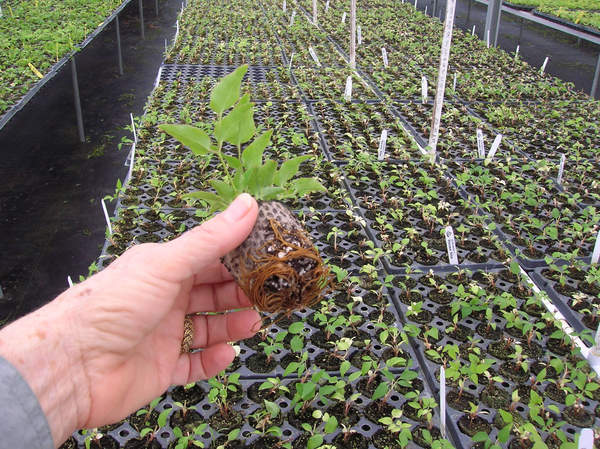

Growing clematis seeds is a fairly simple activity that does not require much effort, so even novice gardeners can cope with this task. But at the same time, you need to know when it is better to transplant flowers into open ground. This process should be taken seriously, since the further growth of the plant depends on it. It all depends on which season of the year you sowed the seeds. Spring seedlings will be fully ready to move to a new location around mid-spring, after the frost has passed. As for the autumn planting, everything is the same here, but exactly the opposite.
Description
Clematis "Helios" usually grows to a height of about 3 meters, that is, noticeably less than the specific Tangut clematis.
Flowering begins in May and lasts until September. The flowers are very numerous, medium-sized, up to 6 cm in diameter. Sepals 4, they are lanceolate, yellow, curved outward - this distinguishes "Helios" from other varieties and from the species form. The stamens are brown, rather long.
Beginning in July, numerous fluffy seedlings appear on the shoots, which sometimes persist until the new season.
Graft
Talking about how to grow clematis with seeds, it is worth talking about hardening plants separately.It will allow not only to increase the resistance of flowers to adverse environmental factors, but also to significantly increase their decorative effect. This process means grafting several varieties of shrubs to obtain more resistant species. This step is very laborious and risky, but the result is worth it.
The procedure is carried out in large pots in which two cuttings are planted together and then covered with a glass container. The shelter is removed immediately after the two separate cuttings grow together. It will be possible to plant a plant in open ground no earlier than in a year. It is best to vaccinate immediately after cutting the sprouts so that they do not have time to dry out. In this case, the chances of success are higher.
Growing from cuttings
Reproduction of clematis using cuttings is not difficult, but time consuming. There are several ways of such plant propagation. In order to obtain a layering, the plant bush can be spud up with humus up to the third pair of leaves. Two years later, a very high-quality and powerful system of adventitious roots is formed on the hilled out cuttings. Such shoots should be separated from the parent plant, and then planted in a permanent place, having previously trimmed the top to two nodes.
The most attractive in terms of productivity is the breeding option for clematis using horizontal layers. A certain disadvantage of this method can be considered the need to have a free area. The method is based on placing shoots in a previously prepared groove and backfilling them with soil. The work should be carried out at the end of August or early September. The apical part of the shoots should be brought out.
In the spring the next year, dormant buds grow shoots that require hilling at least twice a summer. After a year, the plants can be dug up and divided into several seedlings. The method is very convenient and does not injure the parent plant.


We also invite you to read the article in which we talk about the best varieties for growing in Russia.


